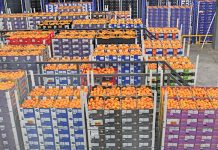
The results of the 2017 Census of Commercial Agriculture (CoCA), which was conducted by Statistics South Africa (Stats SA), were announced by the Statistician-General on 24 March 2020.
The CoCA report contained data collected during initial farm visits that took place from 15 October to 14 December 2018, as well as data collected during the subsequent census period between 4 March and end-November 2019.
According to Stats SA, the general objective of the 2017 CoCA was to collect basic quantitative information on South Africa’s commercial agriculture essential to planning, policy formulation and food security.
In addition, the census sought to generate information on the size, structure and nature of commercial agriculture at industry and municipal level, as well as provide data to use as benchmarks for, and reconciliation of, current agricultural statistics.
This updated information will help improve frames (lists of farms) to be used for conducting commercial agriculture sample surveys.
The results of CoCA 2017 also contain details on land use, land tenure, crop production, number of livestock, use of machinery, and financial data such as income, expenditure, and details of purchases.
The census was carried out via questionnaires that farmers had to complete for the financial year ended on any date between 1 March 2017 and 28 February 2018, according to the usual reporting schedule of the enterprise, with the following exceptions: animals on farms as at 30 September 2018, employment as at 30 June 2018, and land use as at 30 September 2018.
Results
The results of the census showed that the total number of farming units engaged in commercial agriculture in 2017 was 40 122.
The largest proportion of farms were involved in running livestock (13 639 or 33,9% of the total), followed by mixed farming (12 458 or 31,1%) and field crops (8 559 or 21,3%).
The province with the highest number of farms in 2017 was the Free State (7 951 farms or 19,8% of the national total), followed by the Western Cape (6 937 or 17,3%), North West (4 920 or 12,3%) and the Northern Cape (4 829 or 12%).
The provinces with the lowest number of farms in 2017 were Gauteng (2 291 or 5,7%), Mpumalanga (2 823 or 7,0%) and Limpopo (3 054 or 7,6%).
On land use (as opposed to farm size), the survey showed that in September 2018 the total land used for commercial agriculture was 46,4 million hectares, which represents 37,9% of South Africa’s total land area of 122,5 million hectares.
Commercial agricultural land comprised mainly grazing land (36,5 million hectares) and arable land (7,6 million hectares).
The Northern Cape accounted for the largest land-use share of the country’s commercial agricultural land (37,1%), followed by the Free State (16,4%), the Eastern Cape (12,3%) and North West (11,5%). Gauteng (0,8%) and Limpopo (3,7%) recorded the smallest share.
Findings from the report show that the total number of persons employed in commercial agriculture as on 30 June 2018 was 757 628, down from 769 594 on 28 February 2007 (a drop of 1,6%).
In terms of employment, the major commercial agricultural activity in 2017 was horticulture (268 740 employees or 35,5% of the total), followed by mixed farming (185 863 or 24,5%) and livestock farming (162 116 or 21,4%).
Thank you to farmers
The census was made possible due to the co-operation of farmers, and Stats SA appreciates the effort made by every farmer who participated.
“We thank you wholeheartedly for your support during the course of CoCA 2017, for opening your gates, and for your participation in the census,” Stats SA stated.
An appeal was also made to farmers who did not participate to allow themselves to be counted in the next CoCA.
Visit statssa.gov.za for more information













